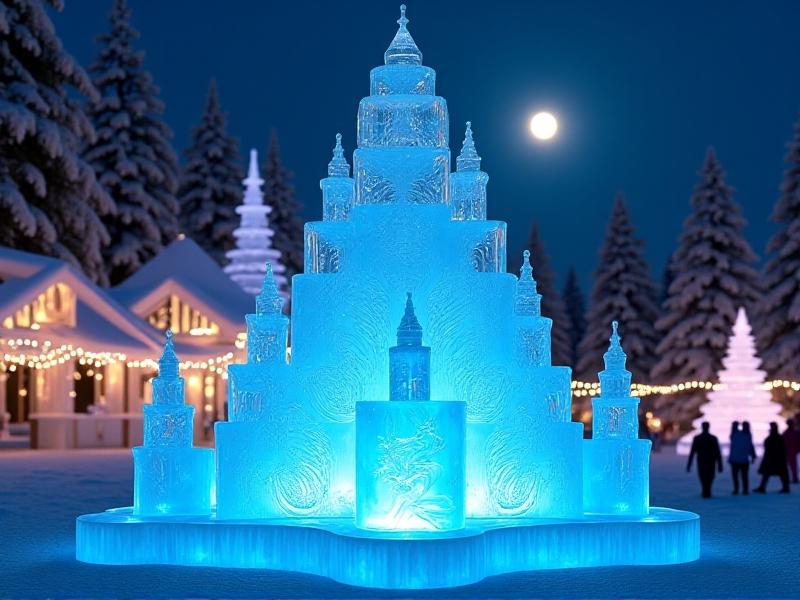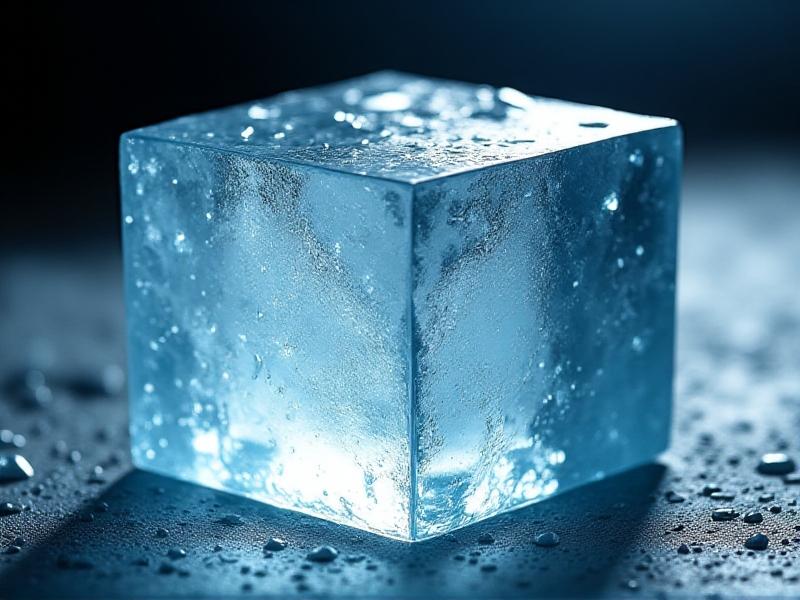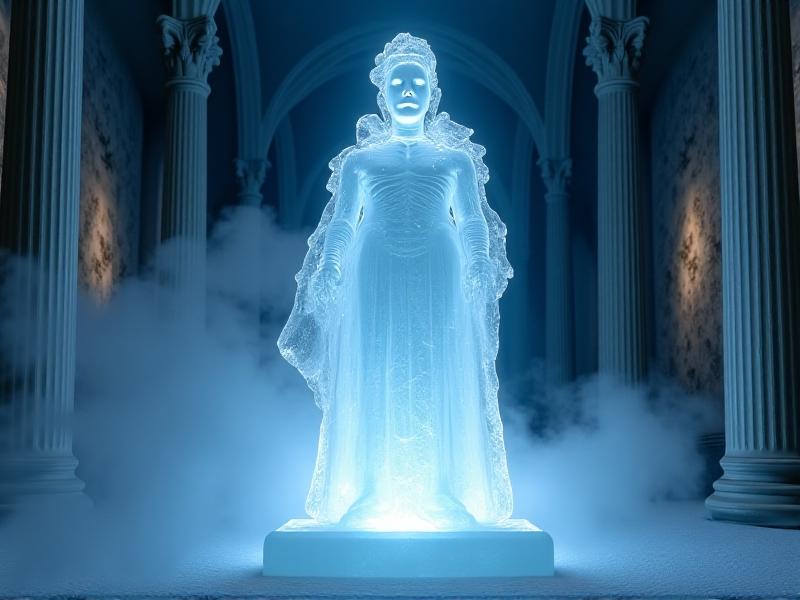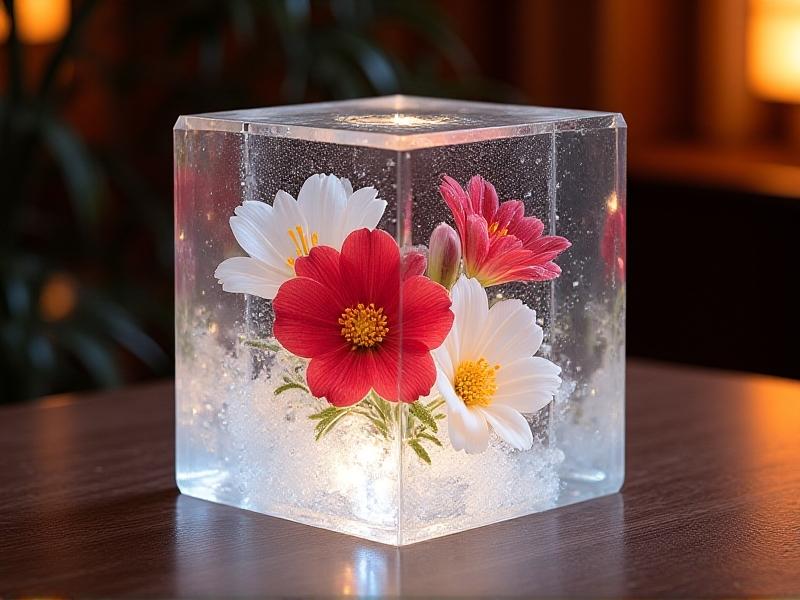Combining Textures and Colors in Ice Art
The Art of Ice: An Introduction to Texture and Color
Ice art is a fascinating medium that combines the ephemeral beauty of frozen water with the creativity of sculpture. Artists who work with ice often focus on two key elements: texture and color. These components can transform a simple block of ice into a stunning masterpiece. Textures in ice art can range from smooth, glass-like surfaces to intricate, jagged patterns, while colors can be introduced through dyes, lights, or natural inclusions. The interplay between these elements creates a dynamic visual experience that captivates audiences and pushes the boundaries of traditional art forms.

Understanding the Basics: How Ice Behaves as a Medium
Before diving into the creative aspects of ice art, it’s essential to understand how ice behaves as a medium. Ice is unique because it changes state with temperature, making it both challenging and rewarding to work with. Artists must consider factors like freezing points, clarity, and brittleness when designing their pieces. The texture of ice can be manipulated by controlling the freezing process—slow freezing results in clearer ice, while rapid freezing creates a cloudier appearance. Understanding these basics allows artists to harness the natural properties of ice to enhance their designs.

Techniques for Creating Texture in Ice Sculptures
Creating texture in ice sculptures involves a combination of tools and techniques. Chisels, saws, and torches are commonly used to carve and shape the ice, while sandblasting can create a frosted effect. Some artists even use molds to achieve specific patterns or designs. The key is to experiment with different methods to achieve the desired effect. For example, a rough, jagged texture can evoke a sense of ruggedness, while a smooth, polished surface can convey elegance and sophistication. The texture not only adds visual interest but also influences how light interacts with the sculpture.

Introducing Color: Methods and Materials
Color can breathe life into ice art, transforming it from a monochromatic piece into a vibrant work of art. There are several ways to introduce color into ice sculptures. One common method is to add food-safe dyes to the water before freezing, creating a uniform color throughout the piece. Another approach is to use colored lights to illuminate the sculpture, which can change the appearance depending on the angle and intensity of the light. Some artists even incorporate natural elements like flowers or leaves to add organic colors and textures. The choice of method depends on the desired effect and the artist’s vision.
The Role of Lighting in Enhancing Ice Art
Lighting plays a crucial role in ice art, as it can dramatically alter the appearance of a sculpture. The right lighting can highlight textures, enhance colors, and create shadows that add depth and dimension. LED lights are a popular choice because they are energy-efficient and come in a variety of colors. Some artists use spotlights to focus attention on specific areas of the sculpture, while others prefer diffused lighting for a softer, more ethereal effect. The interplay between light and ice creates a mesmerizing visual experience that draws viewers in and makes the art come alive.
Combining Textures and Colors: Tips for Cohesive Designs
Combining textures and colors in ice art requires a thoughtful approach to ensure a cohesive design. Artists should consider how the textures and colors will interact with each other and with the lighting. For example, a rough texture might pair well with bold, vibrant colors, while a smooth texture might be better suited to soft, pastel hues. It’s also important to think about the overall theme or message of the piece and how the textures and colors can enhance that. Experimentation is key, as is a willingness to adapt and refine the design as the piece takes shape.
Inspiration from Nature: Incorporating Organic Elements
Nature is a rich source of inspiration for ice artists, offering endless possibilities for textures and colors. Many artists incorporate organic elements like flowers, leaves, or branches into their sculptures to add natural beauty and complexity. These elements can be frozen directly into the ice or added as accents after the sculpture is complete. The result is a piece that feels alive and connected to the natural world. By drawing inspiration from nature, artists can create ice art that resonates with viewers on a deeper level, evoking emotions and memories tied to the natural environment.
Challenges and Solutions in Ice Art Creation
Creating ice art comes with its own set of challenges, from the physical demands of working with a heavy, brittle medium to the logistical issues of transporting and displaying the pieces. One common challenge is maintaining the integrity of the sculpture in warmer temperatures. Artists often use cooling systems or insulated displays to prevent melting. Another challenge is achieving the desired textures and colors, which requires skill, patience, and experimentation. Despite these challenges, the rewards of creating ice art are immense, as it allows artists to push the boundaries of their creativity and create something truly unique.
Showcasing Ice Art: Exhibitions and Festivals
Ice art is often showcased in exhibitions and festivals, where it can be appreciated by a wide audience. These events provide a platform for artists to display their work and connect with others in the field. Some of the most famous ice art festivals include the Harbin International Ice and Snow Sculpture Festival in China and the Ice Alaska World Ice Art Championships. These festivals attract visitors from around the world, offering a unique opportunity to experience the beauty and creativity of ice art. For artists, participating in these events can be a chance to gain recognition and inspire others with their work.
The Future of Ice Art: Innovations and Trends
As technology advances, so too does the potential for innovation in ice art. New tools and techniques are constantly being developed, allowing artists to push the boundaries of what is possible with ice. For example, 3D printing technology is being explored as a way to create more complex and detailed sculptures. Additionally, there is a growing interest in sustainable practices, with artists using recycled or eco-friendly materials in their work. The future of ice art is bright, with endless possibilities for creativity and innovation. As artists continue to experiment and explore new ideas, the art form will evolve, captivating audiences for generations to come.







